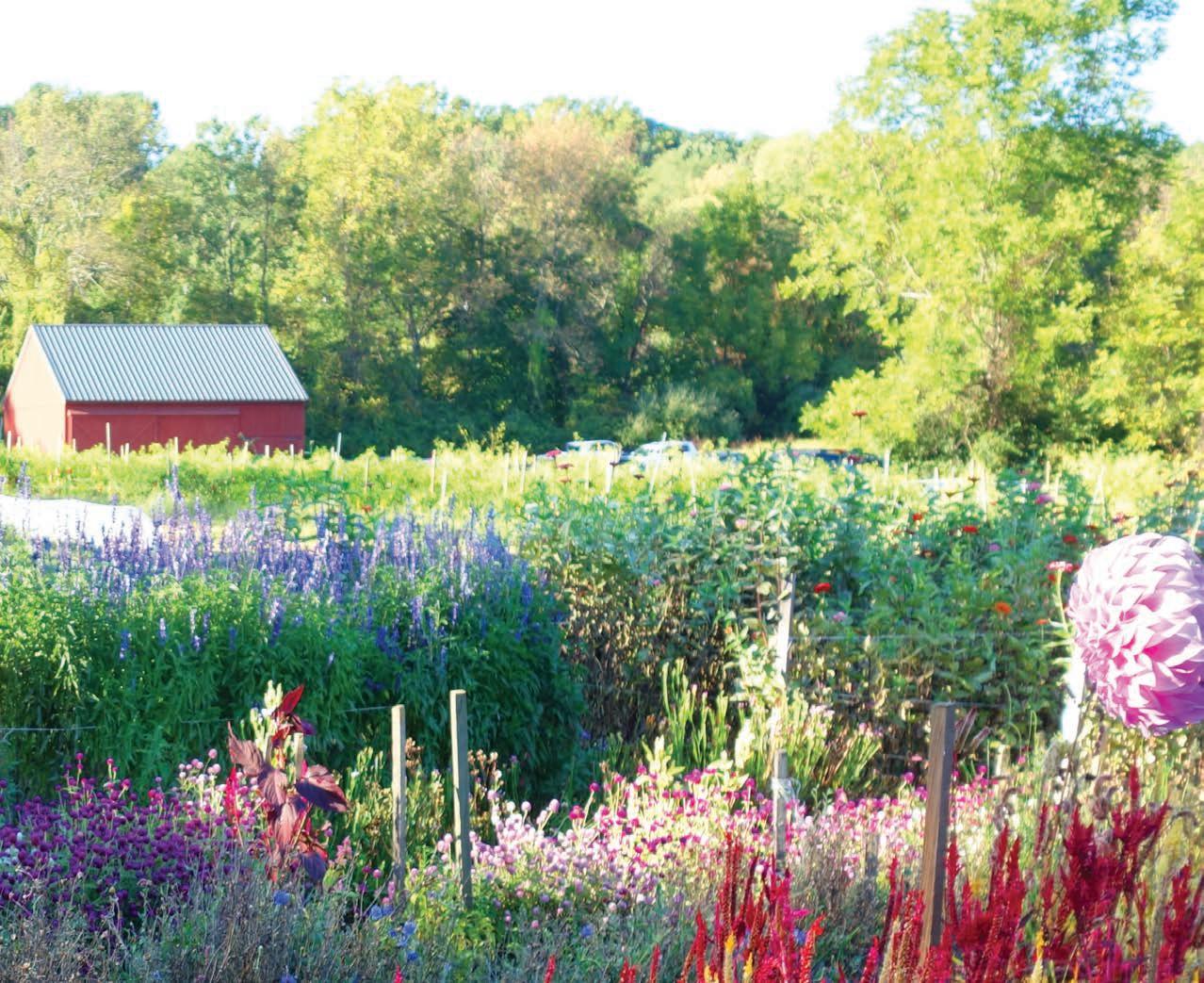
3 minute read
REGENERATIVE FARMING AT RUSHTON
Regenerative Farming at Rushton Growing Food While Enhancing Nature
Since the first day we broke ground at Rushton Farm in 2007, we have been farming with particular sensitivity to the surrounding ecosystem of the entire 86-acre Rushton Woods Preserve where the farm is located. The practices we employ contrast with conventional farming, which is detrimental to the environment with its dependence on synthetic chemicals, genetically modified organisms, heavy irrigation, intensive tillage, and monoculture production. At Rushton Farm we grow healthy food without artificial fertilizers and pesticides using a method we describe as regenerative farming. While we use organic farming methods at Rushton Farm, we have avoided using the term. This is because that official designation requires costly USDA certification. Also, organic farming is not always chemical-free. For many years, we used sustainable agriculture to describe Rushton’s practices because the term applies to farming that does not degrade the land. But what we do at Rushton is more than that—we grow food in a way that is beneficial to the land; it improves the land. Recently regenerative agriculture has been gaining momentum as a more definitive way to describe farming practices that enrich soils, increase biodiversity, enhance the ecosystem, improve water soil retention and support biosequestration—all of which applies to Rushton Farm. Scientists agree that conventional agriculture is negatively affecting the environment and contributes significantly to climate change. As human population and demand for food grows, many countries are turning to deforestation as a way to expand agricultural lands. Because trees remove carbon dioxide from the air, deforestation exacerbates climate change. And combined with the fact that conventional farming uses petroleum-based chemicals and employs heavy use of machinery, the negative impact on the climate is twofold.
Regenerative Farming Practices at Rushton Farm A model of regenerative farming, the careful planning and management of Rushton Farm ensures the preservation of its natural beauty and builds upon the ecological integrity of the land. Our practices include: • Chemical-fr ee cultivation • A diversity of both food and cover crops • Rotational planting • Use of compost • Smaller planting fields • Minimal tilling • Borders planted for pollinator habitat and other beneficial insects

Even without deforestation, conventional agriculture contributes to climate change through practices that produce carbon and destroy soil quality. In contrast, regenerative agriculture seeks to minimize pollution and institute practices that promote both healthy land and healthy food. A central focus of regenerative farming is increasing and rebuilding the health of the soil, and by proxy, increasing the health of the crop plants. Healthy plants naturally sequester atmospheric carbon in their roots and leaves, which eventually ends up in the soil. Healthy soils can contain up to five per cent carbon by weight making it an ideal substrate for removing carbon from the atmosphere, helping to mitigate effects of climate change. While the use of the term is newer, Rushton Farm has been following regenerative practices throughout its entire 13-year history. Each season begins and ends with a diverse assortment of planting cover crops like red clover, oats, vetch, rye, field peas and buckwheat. Cover crops prevent soil erosion and are eventually tilled into the soil as “green manure,” which is rich with nutrients beneficial to the soil and the plants that grow from it. Crops are rotated seasonally so the nutrients in the soil will not be depleted. All plants start in a rich compost mix and, when planted in the field, organic fertilizer and mineral amendments are applied to increase soil vitality. In addition to maintaining chemical-free cultivated areas, we nurture unmown borders, hedgerow, and meadows as habitat for pollinators and other beneficial insects. These same areas also provide bird and wildlife habitat. Our cultivated fields are separated into smaller planting lots, each further separated by open meadow to prevent soil erosion and water runoff and to allow wildlife to move through the farm unobstructed.








